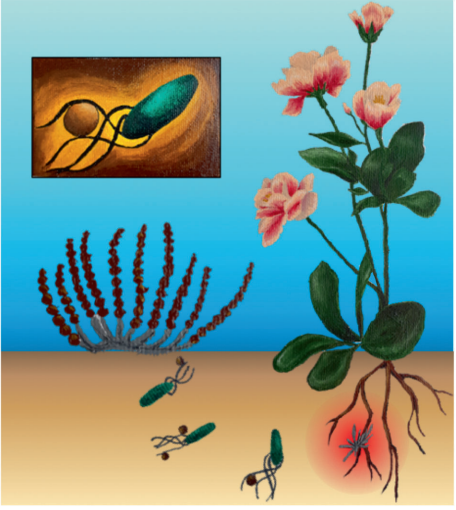“Bacterial piggybacking” allows for movement of non-motile microbes

Figure: a nonscale representation of how Streptomyces achieves movement. Figure from Muok et al. (2021)
Streptomyces are a genus of bacteria associated with having positive symbiotic relationships with plants. These bacteria are transported through relatively long distances by soil-dwelling multicellular animals. However, their movement over shorter distances was still relatively nebulous. This is because Streptomyces is a non-motile bacteria, and thus incapable of moving any considerable distance. A study conducted found strong evidence that one of the methods of movement over short distances was through “bacterial hitchhiking”. To test this, spores of Streptomyces were cultured in 3 different methods. One in which the spores were cultured by themselves, one in which they were cultured with a mix of Bacillus subtilis (a motile bacteria), and a plate in which Streptomyces was cultured in the same plate but separate from B. subtilis. From these three set-ups, only the plate in which Streptomyces was cultured mixed with B. subtilis did the spores move. Electron microscopy revealed that the spores achieve this by attaching to the flagella of B. subtilis using rodlin proteins. Furthermore, the spores can attach to other bacterial species, such as Pseudomonas. This experiment brings insight into how bacteria are capable of distribution throughout a microhabitat, even if they themselves are incapable of movement.
Original article:
Muok, A.R., Claessen, D. & Briegel, A. (2021) Microbial hitchhiking: how Streptomyces spores are transported by motile soil bacteria. The ISME Journal. 15. 2591-2600.
No comments:
Post a Comment